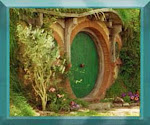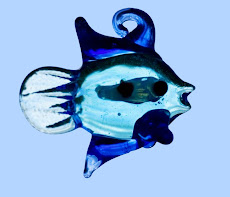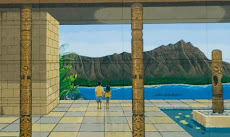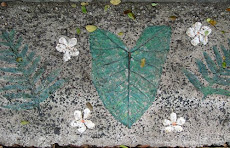|
|
| |
| (Many Paths) | ||
| An Online Newsletter Celebrating Native America | ||
| February 23, 2002 - Issue 55 | ||
|
| ||
| | Looking at Where Native People Stand in Contemporary Native America | |
| by Suzanne Westerly "Canku Ota" Correspondent | ||
| credits: photos of Duane and some members of NAFTA by Suzanne Westerly |
 Just back from the Sundance Film Festival in Park City, Utah, where his film Running On Indian Time premiered; exuberant young filmmaker, Duane Allen Humeyestewa said, "The experience was a huge success!" Exhausted, but energized from the positive responses he received after his film was seen by a packed audience, he proclaimed, "The whole experience was overwhelming, but positive" and that he was "ready for the next movie." Just back from the Sundance Film Festival in Park City, Utah, where his film Running On Indian Time premiered; exuberant young filmmaker, Duane Allen Humeyestewa said, "The experience was a huge success!" Exhausted, but energized from the positive responses he received after his film was seen by a packed audience, he proclaimed, "The whole experience was overwhelming, but positive" and that he was "ready for the next movie." With a challenging schedule of going back and forth from California to New Mexico he only finished filming last November. The film was accepted for the Sundance Film Festival at the end of November, the editing was done by December, the sound finished in January, and then he left for Sundance January 8th. Quite a whirlwind! "His resourcefulness paid off. Despite the low budget, Humeyestewa wanted the look of a major motion picture." Growing up on a High Desert Mesa Duane spent his young life up on a high desert mesa learning the ways of his people. His family also instilled in him the "ambition to do something for myself." Realizing he had a lot to learn if he was going to "do things right," he focused on his education. Though young, he knew he wanted to "make it" in the contemporary world outside of the village of Mishongnovi, the First Village on Second Mesa, in the Land of the Hopi people. "When I was fairly young, I wanted to be a filmmaker. I remember reading short stories that I wrote in fifth and sixth grade." One of Duane's teachers had published a book filled with stories the children in her class had written. He came across it again when he was older. In it, there were several stories he had written while the other kids had one or two. "It made me wonder, why was I the only one writing? Then I had a mini epiphany, I was supposed to be writing; those articles were my first published works." It was one of the only times, he said, that he felt good about "the BIA education system. We seldom had opportunities like that. The routine was always go to school for art, have recess and come home. So I give credit to a lot of those teachers who really pushed and helped shape me into what I am." From Hopi to Hollywood "I was always influenced by film," he said. "I remember going from the village, Mishongnovi, down to the school or the community center building where 16 mm films from Hollywood were shown on Friday nights. I would always go down there; me and all these adults, and I'd watch every film." Coming from a supportive family, Duane was raised "with lots of ambition to do something for myself. I knew for a fact that I would definitely adapt into the mainstream world and culture at some point, and I made it a point to go away." "I always knew I needed training," he said. To others interested in filmmaking, his suggestion is, "go to college or an academy - you have to have training," he said earnestly. "It's a difficult thing to do, to make it as a filmmaker. You can dabble, but you'll just be a dabbler the rest of your life - you must have training." So at thirteen, he left Hopi to attend a Prep school in Phoenix, AZ. After prep school, he attended Loyola Maramount University, then transferred to the University of New Mexico (UNM) where he "focused on the technical design aspect of theatre, film, and TV" and "essentially to study the Southwest. I did it to understand more thoroughly the culture and the depth of the history of the people," he explained, "and to embellish myself in the arts." While in New Mexico, Duane worked on a variety of projects including theatre, television and films. He left New Mexico after graduating at the top of his class and with a knowledge "about where Native people stand in contemporary Native America - where we are as a people in relation to the people around us. Where we could go with the technology we have today." In both 1997 and 1998 Duane was chosen to participate in the Sundance Institute filmmaker's lab in Utah. There he gained valuable insight into independent filmmaking, and was committed "to filmmaking for the rest of my life." Setting His Sites on Future Goals "It's my lifetime goal and career, it's who I am," he continued. "I'm going to make it a point to help and assist Native people throughout the country in getting some of this information out there, to educate people around the world. Essentially, tell the truth. There are so many art mediums for presenting your story and sharing your information with the world. Movies are just one way." "One goal is to correct the wrongs that Hollywood has presented," Duane continued. "It's a cliche'; everybody says it - we've all talked about it; how they screwed up the portrayal of Native Americans and the world in general. We acknowledge that. We want to move on. We want to set it straight for the rest of the world." "I wouldn't be here if it wasn't for having a strong family foundation, a strong cultural foundation and a really positive upbringing," said Duane softly. "One of the things that I naturally found myself fascinated with was the dynamics of how Native people, specifically Hopi, interacted with the outside world and how we even survived as long as we have with as much influence as we've had." His new film Running on Indian Time isn't about Hopi, but it is about Pueblo people. Filmed in Santa Fe, Albuquerque, Zia, and Laguna Pueblo, Duane explains his film as, "a mini celebration of tribe, family, and individuality." Running on Indian Time is very emotional, poignant and beautiful. His film gives the audience a glimpse and feel of what it is like to be a part of today's Pueblo society, as Duane blends a mixture of contemporary social issues with traditional ideologies. He feels people only want to see "period Native pieces when they're romanticized. Then it becomes Not Native. It becomes Hollywood. And that's what I don't want," he said with conviction. Duane believes that to "collaborate and network is important. You have to collaborate to some degree. There is always uncertainty about how it's going to go, how it's going to pay off. Some people don't want to collaborate, but I have to decide, look the only way we're going to survive is collaborating. It's a risk, it's always a risk. I took a chance moving, took a chance going to school, we take chances everyday. Getting in your car you take a chance." "The whole goal is getting from point A to point B, and dealing with some of the issues in-between; obstacles, roadblocks, positive moments, negative moments, they're just a part of life," he said philosophically. With his energy, Duane will certainly make things happen, look for his films, Humeyestewa is a name you will remember, a new voice in cinema. The Sundance Film Festival is held every January in Park City, Utah, Salt Lake City, Utah, and Sundance, Utah. The Sundance Institute was founded by Robert Redford twenty one years ago. It was dedicated to the development of artists of independent vision and to give them the opportunity to exhibit their new work. Redford wanted to enhance the artistic vitality of the American film. Today, Sundance Institute, supports and helps in the development of emerging screenwriters and directors of vision, and to the national and international exhibition of new, independent dramatic and documentary films. On January 25th, it was announced that Robert Redford has been chosen to receive an Honorary Award by the Board of Governors of the Academy of Motion Picture Arts and Sciences. The citation will read: "Robert Redford - Actor, Director, Producer, Creator of Sundance, inspiration to independent and innovative filmmakers everywhere." N. Bird Runningwater (Cheyenne, Mescalero Apache) currently serves as an advisor to the Sundance Institute's Native Film Program, which is based in Beverly Hills, California. Bird is a graduate of the University of Oklahoma with degrees in Journalism and Native American Studies, he received his Master of Public Affairs degree from the University of Texas at Austin's LBJ School of Public Affairs. He is involved in a multitude of projects. One is being on the National Editorial Advisory Board for YES! A Journal of Positive Futures. In an article written for the YES! Journal, Bird shares his thoughts about Native Americans in the film industry. Titled, “smoke signals” he writes,” After years of misrepresentation in the media, Native American filmmakers are taking control of their own stories, including in a new breakthrough film produced, directed, and written by Native Americans.” He goes on to say, “Inaccuracies and stereotypes undermine indigenous languages and cultures because the mainstream media promotes assimilation. The inaccuracies also affect the political process that is so vital to upholding tribal sovereignty and the relations between the 557 tribal nations in the US and the federal government.” Referring to the Sundance Festival in 1998 when the wonderful film Smoke Signals premiered, Bird writes, “Now, almost 20 years later, a movement that has not been visible to many is coming into its own. Last January at the Sundance Film Festival in Utah, the first feature film written, co-produced, and directed by Native Americans premiered. It has since been distributed and shown nationally at hundreds of theaters. That film, Smoke Signals, is the result of 20 years of hard work by the Native media world. It is also hard evidence that we are finally reaching a point where Native audiences don’t have to search the television and movie screens as hard as my cousin Cathy and I did for a small glimpse of our lives.” Go to http://www.futurenet.org/8Education/runningwater.htm for Bird’s full article, and to http://www.sundance.org for more on the Sundance Institute. Suzanne Westerly was based in the Los Angeles area. As of May, 2003, she can be reached at suzanne@photosofaloha.com, 808-781-5112 |
|
| ||
| Canku Ota is a copyright © 2000, 2001, 2002 of Vicki Lockard and Paul Barry. | ||


 A few months ago, on a warm and sunny afternoon in Hollywood, a group of actors, writers and directors, met for a NAFATA (Native American Film And Television Alliance) meeting at the Autry Museum of Western Heritage. After the meeting we stood talking in the parking lot under the trees, the green rolling Hollywood Hills as a backdrop. Duane talked enthusiastically about his present project; a film he wrote, and was about to direct and produce, called Running On Indian Time. How did he get from Hopi to Hollywood?
A few months ago, on a warm and sunny afternoon in Hollywood, a group of actors, writers and directors, met for a NAFATA (Native American Film And Television Alliance) meeting at the Autry Museum of Western Heritage. After the meeting we stood talking in the parking lot under the trees, the green rolling Hollywood Hills as a backdrop. Duane talked enthusiastically about his present project; a film he wrote, and was about to direct and produce, called Running On Indian Time. How did he get from Hopi to Hollywood? 





























